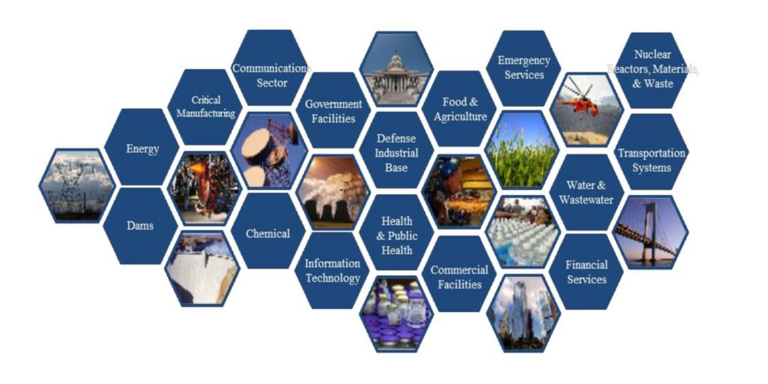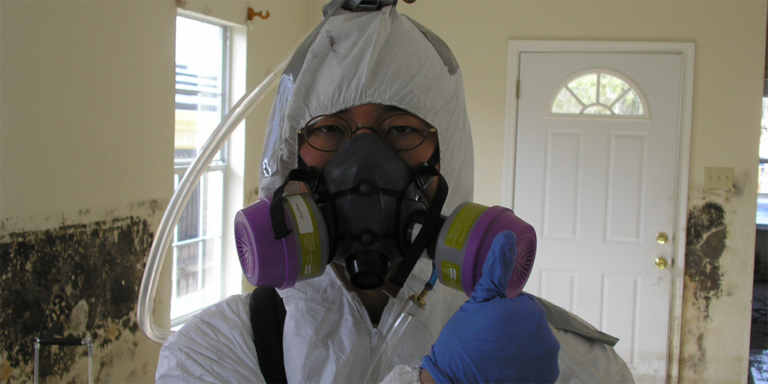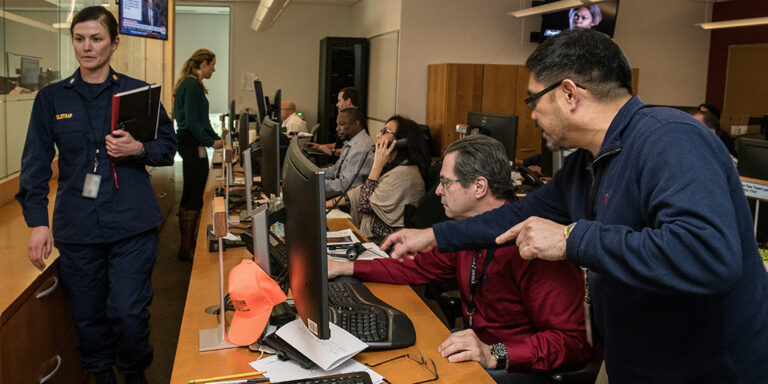
Article Archive by Year

The psychological side of a disaster or other impactful event is a critical component of crisis management. However, many people still do not fully understand the predictable phases and patterns that could help them take the appropriate steps or actions to move through the crisis and mitigate its impact. Understanding

Resilience-Based CI and Domestic Preparedness: A Long-Overdue Imperative
May 15, 2024
For decades, preparedness leaders have known and publicly warned about the rapidly growing and metastasizing threats to and exploitable vulnerabilities of U.S. critical infrastructure (CI). Ongoing iterations of the 1990s-era CI status quo (i.e., cybersecurity- and protection-focused efforts) have proven no match for the existing, much less looming, threats to

Shielding Communities: Public Health Strategies for Natural Hazards
May 15, 2024
Public health risks are common concerns when natural hazards occur. However, history shows that the increasing frequency of events and growing population sizes have been increasing the scale of events and the needs of affected populations. To mitigate complex public health challenges, personnel across disciplines must plan, coordinate, and develop

Elegant Community Preparation
May 8, 2024
Elegant community preparation means having a process that makes disaster planning efforts simpler for community members. By collaboratively focusing on novel factors in an easily understood way, individuals and families can better prepare for any disaster or disruption.

Navigating the Seismic Dance: Preparedness in the Ring of Fire
May 8, 2024
The Pacific Ring of Fire, a moniker that evokes images of volatility and destruction, is not merely a geographic term but a constant reminder of humans’ vulnerability to the earth’s whims. Learn about the multifaceted nature of earthquake risks and delineate the indispensable role organizations play in mitigating the impacts

National Security: A Range of Threats
May 1, 2024
From organized foreign terrorist groups to homegrown terrorists inspired by them, members of the intelligence community have indicated that the threat of attack inside the U.S. has increased to its highest point since the terrorist attacks of September 11, 2001. Communities must explore solutions to meet the ongoing challenges and

Preparing for the Next Public Health Emergency
April 24, 2024
Public health is not just about pandemics but also about a wide range of threats that can affect the health and well-being of communities. In this April edition of the Domestic Preparedness Journal, practitioners share ways to prepare for the next public health emergency.

Sustaining Those Working in Disasters
April 24, 2024
Those working in emergency response roles can face periods of prolonged stress, which takes a toll on their health and well-being. It is important to know how to support them before, during, and after emergencies and disasters. By taking a hazards approach, leaders and their teams will be better equipped

The Missing Plague Vials
April 17, 2024
A true story of missing bubonic plague vials, an airport bomb threat, and other suspicious activities again demonstrate continued national and homeland security vulnerabilities and threats. Perspectives may differ, but the concerns are real and provide an opportunity to learn and prepare.

Primary Care Investments to Increase Community Resilience
April 17, 2024
Community health centers are medical lifelines for millions of Americans. However, financial constraints and healthcare workforce challenges strain these critical resources. New initiatives and additional investments can help communities be more resilient and continue to meet community needs during a crisis.
The Psychology of Crisis
May 22, 2024
The psychological side of a disaster or other impactful event is a critical component of crisis management. However, many people still do not fully understand the predictable phases and patterns that could help them take the appropriate steps or actions to move through the crisis and mitigate its impact. Understanding
Resilience-Based CI and Domestic Preparedness: A Long-Overdue Imperative
May 15, 2024
For decades, preparedness leaders have known and publicly warned about the rapidly growing and metastasizing threats to and exploitable vulnerabilities of U.S. critical infrastructure (CI). Ongoing iterations of the 1990s-era CI status quo (i.e., cybersecurity- and protection-focused efforts) have proven no match for the existing, much less looming, threats to
Shielding Communities: Public Health Strategies for Natural Hazards
May 15, 2024
Public health risks are common concerns when natural hazards occur. However, history shows that the increasing frequency of events and growing population sizes have been increasing the scale of events and the needs of affected populations. To mitigate complex public health challenges, personnel across disciplines must plan, coordinate, and develop
Elegant Community Preparation
May 8, 2024
Elegant community preparation means having a process that makes disaster planning efforts simpler for community members. By collaboratively focusing on novel factors in an easily understood way, individuals and families can better prepare for any disaster or disruption.
Navigating the Seismic Dance: Preparedness in the Ring of Fire
May 8, 2024
The Pacific Ring of Fire, a moniker that evokes images of volatility and destruction, is not merely a geographic term but a constant reminder of humans’ vulnerability to the earth’s whims. Learn about the multifaceted nature of earthquake risks and delineate the indispensable role organizations play in mitigating the impacts
National Security: A Range of Threats
May 1, 2024
From organized foreign terrorist groups to homegrown terrorists inspired by them, members of the intelligence community have indicated that the threat of attack inside the U.S. has increased to its highest point since the terrorist attacks of September 11, 2001. Communities must explore solutions to meet the ongoing challenges and
Preparing for the Next Public Health Emergency
April 24, 2024
Public health is not just about pandemics but also about a wide range of threats that can affect the health and well-being of communities. In this April edition of the Domestic Preparedness Journal, practitioners share ways to prepare for the next public health emergency.
Sustaining Those Working in Disasters
April 24, 2024
Those working in emergency response roles can face periods of prolonged stress, which takes a toll on their health and well-being. It is important to know how to support them before, during, and after emergencies and disasters. By taking a hazards approach, leaders and their teams will be better equipped
The Missing Plague Vials
April 17, 2024
A true story of missing bubonic plague vials, an airport bomb threat, and other suspicious activities again demonstrate continued national and homeland security vulnerabilities and threats. Perspectives may differ, but the concerns are real and provide an opportunity to learn and prepare.
Primary Care Investments to Increase Community Resilience
April 17, 2024
Community health centers are medical lifelines for millions of Americans. However, financial constraints and healthcare workforce challenges strain these critical resources. New initiatives and additional investments can help communities be more resilient and continue to meet community needs during a crisis.
Follow Us
Get Instant Access
Subscribe today to Domestic Preparedness and get real-world insights for safer communities.
ARchives
Article Out Loud – Nation-State Activity in the Age of Artificial Intelligence and Quantum Computing
February 28, 2024
Full article by Margaret (Margie) Graves, an Article Out Loud from Domestic Preparedness, February 28, 2024. In this featured article, a senior fellow with the IBM Center for The Business of Government describes the benefits and challenges as nation states race to harness the power of artificial intelligence and
Article Out Loud – A Holistic Approach to Cybersecurity Risk
February 28, 2024
Full article by Ernesto Ballesteros, an Article Out Loud from Domestic Preparedness, February 28, 2024. In this featured article, a cybersecurity state coordinator for CISA explains how cybersecurity is a core business process that involves the entire organization or agency. The continuity of government and operations depends on a
Article Out Loud – A Foreign Government, Oprah, and Fires in Maui: The Impact of Misinformation on Community Resiliency
February 21, 2024
Full article by Marek N. Posard and Jessica Jensen, an Article Out Loud from Domestic Preparedness, February 21, 2024. In this featured article, a military sociologist and policy researcher at RAND Corporation explore how foreign governments can undermine domestic disaster response efforts. In August 2023, rumors on social media
Article Out Loud – Protecting Infrastructure – Cyber, Physical, and EMP Attacks
February 21, 2024
Full article by David Winks, an Article Out Loud from Domestic Preparedness, February 21, 2024. In this featured article, a cyber defense expert describes the complexities of protecting the power grid from cyber, physical, and electromagnetic pulse attacks. Like a giant spider web, the grid connects power companies and
Article Out Loud – Repeated Intelligence Failures – Not Connecting the Dots
February 14, 2024
Full article by Robert Leverone and Darren E. Price, an Article Out Loud from Domestic Preparedness, February 14, 2024. In this featured article, two homeland security experts discuss how combating potential threats and avoiding intelligence failures involves identifying the signals and warnings in available information and connecting the dots.
Article Out Loud – Fighting Cyberattacks at the Western Hemisphere’s Busiest Port
February 14, 2024
Full article by Gene Seroka, an Article Out Loud from Domestic Preparedness, February 14, 2024. In this featured article, the executive director of the Port of Los Angeles shares the port’s efforts to combat millions of cyber-intrusion threats each year. Listen to this expert’s experience with protecting cargo shipping
Article Out Loud – The [Evil] Empire Strikes Back: National Security Emergencies
February 7, 2024
Full article by Robert J. (Bob) Roller, an Article Out Loud from Domestic Preparedness, February 7, 2024. In this featured article, a federal emergency planner explains how preparedness strategies have shifted over the years based on the threats that are most likely to affect communities. After the Cold War
Article Out Loud – Needed: More Imagination for Countering Domestic Risks
February 7, 2024
Full article by Jeanne Benincasa Thorpe, an Article Out Loud from the Domestic Preparedness Journal, February 7, 2023.From “Lord of the Flies” to the terrorist attacks of 9/11, significant consequences have been blamed on failures of imagination. In this featured article, a national security and resiliency expert encourages leaders to
Article Out Loud – Unleashing Community Resilience Through Collaborative Leadership
January 31, 2024
Full Article By Michael R. Valiente, an Article Out Loud from Domestic Preparedness, January 31, 2024. Elected officials and emergency response personnel form the nucleus of community leadership, a driving force for collaborative relationships with local stakeholders. Find out how community leaders who adopt the tenets of transformational leaders can
Article Out Loud – Commercial Facilities Sector Perspectives
January 31, 2024
Full Article By Kole (KC) Campbell, an Article Out Loud from Domestic Preparedness, January 31, 2024. Commercial facilities dominate the U.S. economy, contributing trillions of dollars to the U.S. gross domestic product while employing and supporting millions of jobs. Learn more about this critical infrastructure sector and its interdependencies. Listen
Follow Us
Get Instant Access
Subscribe today to Domestic Preparedness and get real-world insights for safer communities.


